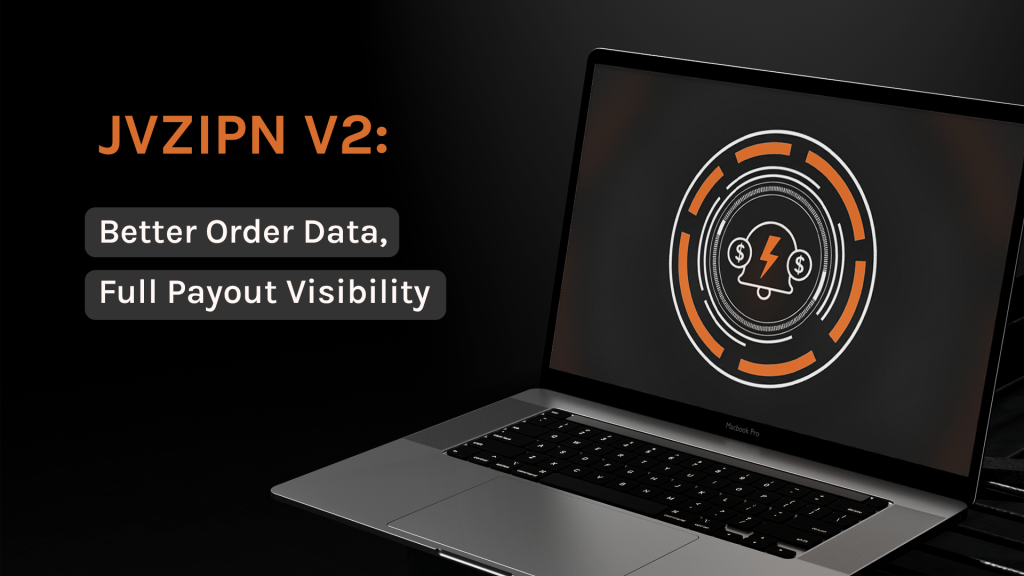We’re shipping JVZIPN v2—a significant improvement to how order notifications reach your systems. If you’re already using JVZoo’s Instant Payment Notifications, this update streamlines your data handling and gives you transparency into every transaction.
JVZIPN v1 served us well, but it was time for an upgrade. We listened to developers, finance teams, and partners asking for cleaner integration points and better insight into payouts. v2 addresses those needs head-on.
What Changed (And Why It Matters)
1. Cleaner, Explicit Field Names
Instead of cryptic or abbreviated field names, v2 uses consistent, self-documenting fields:
- customer_first_name, customer_last_name, customer_email
- delivery_address_line_1, delivery_city, delivery_region, delivery_postal_code
- product_id, product_name, product_type
- payment_method, transaction_type, status
The win: Less guessing, fewer parsing errors, faster integrations. Your webhook handler becomes simpler and more maintainable.
2. Complete Customer & Shipping Data
v2 sends the full customer record and shipping address in every notification. No more cobbling together data from different sources or making assumptions about customer info.
This means you can:
- Fulfill orders faster with complete shipping details
- Update CRM systems with a single webhook
- Log comprehensive transaction records without follow-up calls
- Build accurate reporting without data gaps
3. Structured Payout Tracking
Here’s the big one: the transactionPayouts array. Every order now includes a breakdown of exactly who got paid and how much:
Vendor Payout: $62.00 → Acme Digital Corp (Paid)
Affiliate Payout: $29.10 → Growth Labs LLC (Paid)
Platform Fee: $5.90 → JVZoo (Paid)
For each payout, you get:
- Payee name and ID
- Amount and payout type (vendor, affiliate, platform)
- Payment processor and status
Why this matters:
- Accounting & Finance: Reconcile commissions against actual vendor payments instantly
- Partner Management: Track affiliate earnings with full transparency
- BI & Reporting: Build accurate dashboards of who earned what, when, and how
- Compliance: Maintain complete audit trails for regulatory requirements
4. Same Rock-Solid Verification
The signature verification model remains unchanged. We just made the field specification explicit so verification is bulletproof. Your existing security model still works; just migrate the field list when ready.

Who Should Upgrade (And When)
Developers: If building something new or modernizing, v2 reduces code complexity. Your v1 handlers keep working forever.
Finance & Accounting Teams: If reconciling payouts manually, v2 automates it. No deadline—upgrade when ready.
Affiliate & Partner Managers: If tracking commissions, v2 transparency is a game-changer. Nothing changes about v1.
DevOps & Platform Teams: If managing webhooks at scale, v2 consistency means fewer surprises.
TL;DR: Try v2 on new products. Migrate existing ones when it fits your schedule. v1 is not going anywhere.
How to Get Started
- Step 1: Read the JVZIPN v2 Integration Guide for complete payload examples and code snippets.
Click Here to View Documentation. - If on v1, no rush. Set up v2 alongside v1—they coexist.
- Migrate products at your own pace. Run both for a few days to compare data.
- Once confident, switch over. v1 stays supported, v2 gets future improvements.
Backward Compatibility & Migration
Nothing breaks. v1 is not going anywhere. We are keeping IPN v1 running indefinitely. No forced migrations, no deprecation deadlines.
That said, v2 is where we are investing. If building something new, now is the time to switch.
How to upgrade at your own pace:
- Create a new v2 endpoint on your domain
- Configure it in JVZoo for a new product or test environment
- Run v2 for a few days, compare the data with v1
- Once comfortable, switch existing products over
- Keep v1 running for as long as needed
v1 stays supported and stable. v2 is where future features land. Pick your timeline. Ready for cleaner order data and full payout transparency? Migrate to JVZIPN v2 at your own pace. Your current setup works indefinitely.

